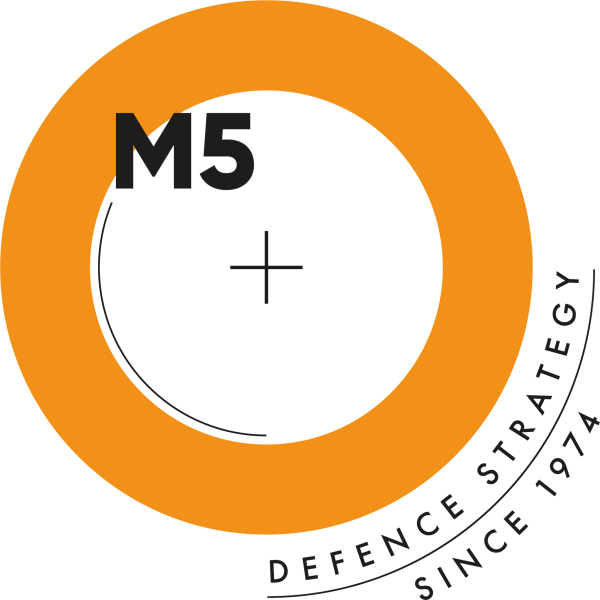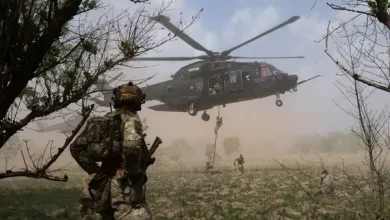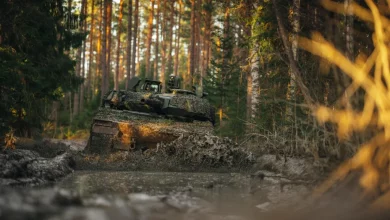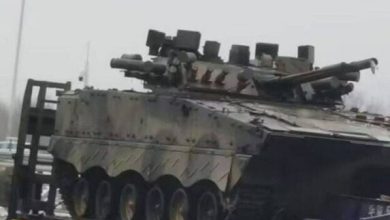Expert: China turns tanks into combat systems
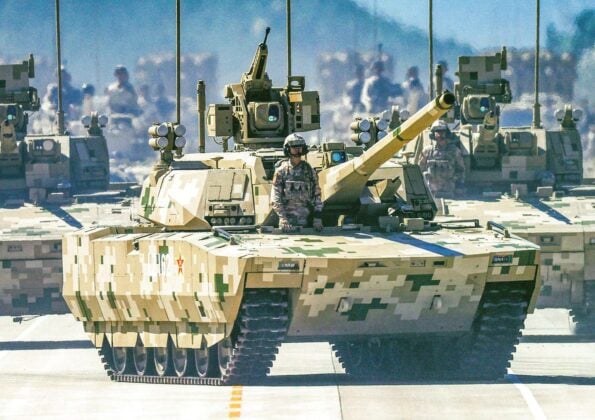
At Defence Blog, we asked armored vehicle expert and lead analyst Serhiy Berezutskiy, an analyst at the Ukrainian Strategic Initiative Center, to share his view on China’s newest tank concept and the future of armored warfare.
The Russian-Ukrainian war has convincingly shown that the classical tank paradigm, which has dominated military thought since the Second World War, is coming to an end. We are now witnessing attempts by several countries to develop a new concept of the tank of the future. German projects such as the EMBT (Enhanced Main Battle Tank), KF51U Panther Evo Upgrade, Leopard-2 A-RC 3.0, the British Challenger 3 (CR3) and MODIFIER (Mobile Direct Fire Equipment Requirement), as well as the American M10 Booker and Abrams M-1A3 — all of them, to varying degrees of innovation, are attempts to break out of the rigid framework of traditional tank design.
China is not standing aside either — at a grand parade in Beijing, it unveiled a tank designated Type 100 (ZTZ-100). It should be noted that in terms of innovation, the Chinese design is far ahead of its Western counterparts.
Type 100 differs radically from its predecessors, which evolved iteratively from the Type 59 medium tank (a copy of the Soviet T-55) to the Type 99 main battle tank (MBT). The first thing that stands out is its weight and size. One of the latest Chinese MBTs — the Type 99A2 — depending on configuration, has a combat weight of 54 to 58 tons. The Type 100, depending on the level of modular protection, weighs between 35 and 40 tons, thus returning to the medium tank weight class.
The most likely reason for this transformation is a shift in China’s expected main adversary — and thus the theater of operations where this new combat vehicle is intended to be used. All previous Chinese tanks were designed to counter the Soviet Union, meaning they were built for operations in the steppes of Mongolia and Transbaikal. Today, the USSR’s successor — Russia — is not only rapidly losing the capability to confront China militarily but is becoming increasingly dependent on Beijing. Chinese strategic planning is characterized by a long horizon, so regaining the territories seized by Russia under the Treaty of Aigun and the Peking Conventions may eventually be achieved without the use of military force (and without tanks). China only needs to patiently wait for Russia’s eventual decline.
Thus, India is now emerging as China’s main strategic adversary. The only land section of the China–India border is located in the high-altitude Ladakh region. Consequently, a tank concept originally designed for extensive operations on plains is not particularly suited to mountainous terrain.
The Chinese carefully studied the experience of tank warfare in Afghanistan. The T-62 tank could not be effectively used in the mountains because bridges and narrow mountain roads often collapsed under its weight, and once disabled, it typically blocked the entire passage. Lighter T-55 tanks and even the antiquated T-34 performed much better in mountainous environments, while the T-62 was mostly used in the deserts of eastern and southern Afghanistan.
Let us take a closer look at the Chinese concept. The Type 100 is envisioned as part of a combined combat system, which also includes the ZBD-100 fire support vehicle. The reasoning behind this symbiosis is the belief that the level of situational awareness and firepower provided by a single vehicle is no longer sufficient on the modern battlefield. Combining two combat vehicles into a single system ensures not only constant data exchange but also mutual fire support. Both vehicles are built on a common chassis, which reduces cost and simplifies crew training, maintenance, and logistics.
The design of these vehicles is strikingly different from previous generations. The Type 100 features an unmanned turret. Russian media rushed to label this solution as the “Armata syndrome,” conveniently forgetting (or, more likely, never knowing) that the creators of the Russian “Armata” borrowed the idea from the Kharkiv Object 477 tank, which was under development in the mid-1980s.
A major step forward is the reduction of the crew to two people. The front of the hull houses two crew hatches, while the turret has no crew hatches — only small technical access panels. The crew consists of a driver and a commander, while the gunner’s functions are almost entirely delegated to artificial intelligence. The tank’s onboard AI, integrated into a combat information and control system, is itself subordinated to a higher-level AI that performs some of the functions of the unit’s command post.
The crew uses augmented reality goggles based on the “transparent armor” principle: a composite image stitched from multiple external cameras allows them to observe the environment as if the armor were not there. Due to the network-centric architecture of the observation system, the goggles can display not only their own targeting imagery but also feeds from other vehicles in the unit, reconnaissance drones, and any graphic data from command — including satellite imagery.
These solutions are expected to improve the speed of combat operations: occupying positions, detecting targets, prioritizing their destruction, selecting weapons, and solving ballistic calculations. However, this will only work if the complex hardware and software systems function correctly.
The unmanned turret also provides some protection for the crew, reducing the likelihood of casualties from top-attack munitions. Crew survivability could be further increased by isolating the ammunition compartment from the crew space, although it is currently unknown whether this has been implemented.
The chassis incorporates components from the serial-production Type 15 (ZTQ-15) tank.
There are two levels of main armament: heavy — with 125 mm or 105 mm guns, and light — with 90 mm or 76 mm guns, each with its own autoloader. Using the aforementioned modular “Lego-like” design principle, the tank’s armament can be adapted to the specifics of a given mission. This modularity likely simplifies the process of replacing guns, improving maintainability and enabling quicker repairs of damaged systems.
Additional armament includes a 12.7 mm remotely controlled weapon station.
The much lower weight compared to previous models reduces basic armor protection, but the use of several levels of modular add-on armor maintains a necessary balance between weight and protection depending on the mission. Passive armor is complemented by explosive reactive armor (ERA) modules on the front and slat armor at the rear — explosive ERA near the engine compartment could otherwise damage key systems such as the air intake.
The Type 100 is the first tank to field the new GL-6 active protection system (APS). Compared to its predecessor, the GL-5 Raptor, it includes a fifth radar antenna pointing upward to detect drones and top-attack munitions. In addition to radar, an electro-optical sensor is used to detect the IR signatures of incoming threats. Two rotating launchers with mortar tubes mounted on the rear of the turret are used to neutralize these threats.
Another layer of defense is the JD-4 electro-optical countermeasure system (EOCM), designed to disrupt the guidance of ATGMs and drones using a high-powered LSDW laser. When a missile or UAV is detected, the laser blinds its seeker head or camera. The system can also deploy a multispectral smoke screen that is opaque in both visible and infrared bands using a bank of 12 smoke grenade launchers mounted on the turret. The tank is also equipped with a laser warning receiver and a radar warning detector.
The powertrain is a hybrid system with a 1,500 hp diesel engine, a generator, a battery pack, and electric drive motors. The added complexity increases survivability: if the diesel engine fails or is damaged, the tank can still complete its mission or retreat using battery power. Another reason for switching to an electromechanical transmission is the sharply increased power consumption of onboard systems — APS, EOCM, weapon stabilization, communications, etc. — which makes an auxiliary power unit unnecessary. Supplying them directly from the electric transmission branch is simpler and cheaper.
The second element of the system, the ZBD-100 armored support vehicle, is designed to detect and neutralize anti-tank threats (including drones), enhance situational awareness through continuous data sharing with the main vehicle, and allocate targets based on priority and weapon effectiveness.
Some Western sources view the ZBD-100 as a flawed concept — a “castrated IFV” — because it carries only three dismounts. However, its primary role is not that of a standard infantry squad. The dismount team’s main purpose is to provide fire support for both vehicles, a feature particularly valuable in close-combat environments: urban areas, mountains (again, think Ladakh), jungles, and similar terrain. For illustration, combat experience in the jungles of Vietnam showed that firefights often began at ranges of just 10–30 meters.
The ZBD-100 weighs about 40 tons. The Type 100 chassis is converted into a front-engine layout, with an unmanned turret housing a 30 mm automatic cannon and a combat module unified with that of the tank. A vertical-launch loitering munition system is also likely part of its arsenal. The fire control suite includes a panoramic sight, electro-optical sensors, radar, a reconnaissance quadcopter, and augmented reality helmets. Targeting is performed via a helmet-mounted system using the same “transparent armor” interface.
In conclusion, China has shifted from the “tank-as-combat-unit” concept to a “tank-as-part-of-a-combat-system” concept. This evolution is logical: the range of threats a tank must now counter no longer allows all countermeasures to be placed on a single chassis. The downside is complexity, which — combined with typical Chinese manufacturing quality — could result in cascading equipment failures. Some users of modern Chinese combat vehicles have compared them to Chinese plastic toys: visually appealing and feature-rich but fragile and difficult to repair.
China’s defense industry largely relies on mass production, which assumes that damaged vehicles will be quickly replaced with new ones. Economically, this approach is not viable for countries with smaller economies, but it is worth noting that this flaw concerns implementation rather than concept.
